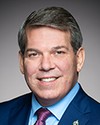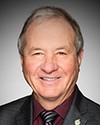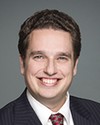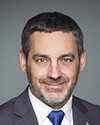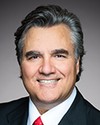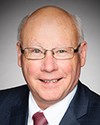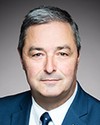I'll go first.
Good morning, Madam Chair and members of the committee. My name is Murray Strom. I'm vice-president of flight operations at Air Canada.
I have overall responsibility for all aspects of safe flying operations across Air Canada's mainline fleet. I'm the airline's designated operations manager, responsible to the Minister of Transport for the management of our air operator's certificate and liaison with the international regulatory agencies with which Air Canada operates.
I'm an active Air Canada pilot and presently a triple-7 captain. I operate to all of Air Canada's international destinations.
I'm joined today by my colleague Sam Elfassy, vice-president of safety.
We are pleased to be here today to provide context to our operations and to answer any questions related to the committee's study on the impact of aircraft noise in the vicinity of major Canadian airports.
Since 2001, Air Canada has been an advocate of the balanced approach to aircraft noise management that was developed by ICAO, based in Montreal. The balanced approach is founded on four elements for noise around airports: noise reduction at source, land use management and planning, noise abatement operational procedures, and operating restrictions.
To effectively manage the impact of aircraft noise on communities takes the concerted effort of all parties involved, including airports, Nav Canada, government, and airline communities.
The biggest impact an airline can have is by reducing noise with new aircraft and technology and by supporting the development and implementation of effective noise abatement operational procedures.
Over the years, aircraft manufacturers have made significant progress to reduce aircraft noise. Aircraft today are 75% quieter than they were 50 years ago. Since 2007, Air Canada has invested more than $15 billion to modernize its fleet with new aircraft, such as the Boeing 787 Dreamliner and the Boeing 737 MAX. Supporting many jobs in the Canadian aerospace industry, these aircraft are the quietest in their respective categories. For example, the Dreamliner is more than 60% quieter than other similar airplanes from past years.
In addition to Air Canada's fleet renewal program, we've also been modernizing our A320 jets with new cavity vortex generators since 2015. Newer A320s are in the process of being retrofitted as they undergo maintenance, while older A320s are being retired.
Maintenance schedules are planned months and years in advance, and in order to consider manufacturing schedules and commercial realities, Air Canada had planned originally to retrofit all its A320 aircraft by the end of 2020. However, due to lack of available kits from Airbus, we are now operating under the following schedule: 15% of our fleet completed by the end of 2018, 50% by the end of 2019, 80% by the end of 2020, and the remainder in 2021.
Air Canada is committed to completing this program on an expedited basis. However, we are limited by maintenance schedules and the availability of the vortex kits from the manufacturer. It is important to note that while the program is under way, Air Canada is replacing A320s with quieter, more efficient 737 MAX aircraft and the Canadian-made A220s formerly known as the Bombardier C Series.
Renewing and upgrading our fleet is also reducing greenhouse gases, an important goal for Air Canada, Canadians, and the government. Once this process is complete, our fleet will be among the most fuel-efficient in the world. By the end of 2019 we will have also completed the upgrade of our flight management and guidance systems and the satellite-based navigation systems of our Airbus narrow-body fleet.
These updates will enable the aircraft to fully participate in performance-based navigation initiatives being implemented in airports across the country. This improves fuel efficiency, reduces greenhouse gases, and also reduces noise.
Air carriers operate with the highest safety standards. Our pilots must comply with the navigation and noise abatement procedures set by Nav Canada and airports at all times. We contribute to this process, informed by the balanced approach and Transport Canada's guidelines for implementation of the new and amended abatement procedures.
We also participate in the Toronto industry noise abatement board that provides the technical forum to analyze and consider the operational impact of many of the noise mitigation techniques. We also extend technical expertise to the board and support the effort, with the use of our simulators, to test the proposed approaches.
Another important element of the balanced approach is land use planning. Appropriate land use planning policies are critical to preserve the noise reductions achieved through this $15-billion investment in new aircraft. It is important that local governments and airport authorities work together to prevent further urban encroachment around the airports.
Finally, we must recognize that demand for air travel is on the rise worldwide. In fact, IATA predicts the global passenger demand for air travel will surge from $4 billion in 2017 to over $7.8 billion in 2036. Air travel is no longer a luxury. It is for everyone. It is the middle class that is driving this growth. It is an efficient and cost-effective way to travel; connects family, business people and communities; and promotes trade and tourism. Air travel reduces travel time from days to mere hours. It builds economies. Consider that in Toronto alone, Air Canada connects Canadians to more than 220 destinations directly and that Canada has three airports among the top 50 most connected in the world.
In closing, I'd like to say that Air Canada is proud of its role in Canadian aviation as a global champion for Canada and is proud of its contribution to the national economy. We remain committed to improving our operation in all aspects and live by our motto of “Fly the Flag”.


